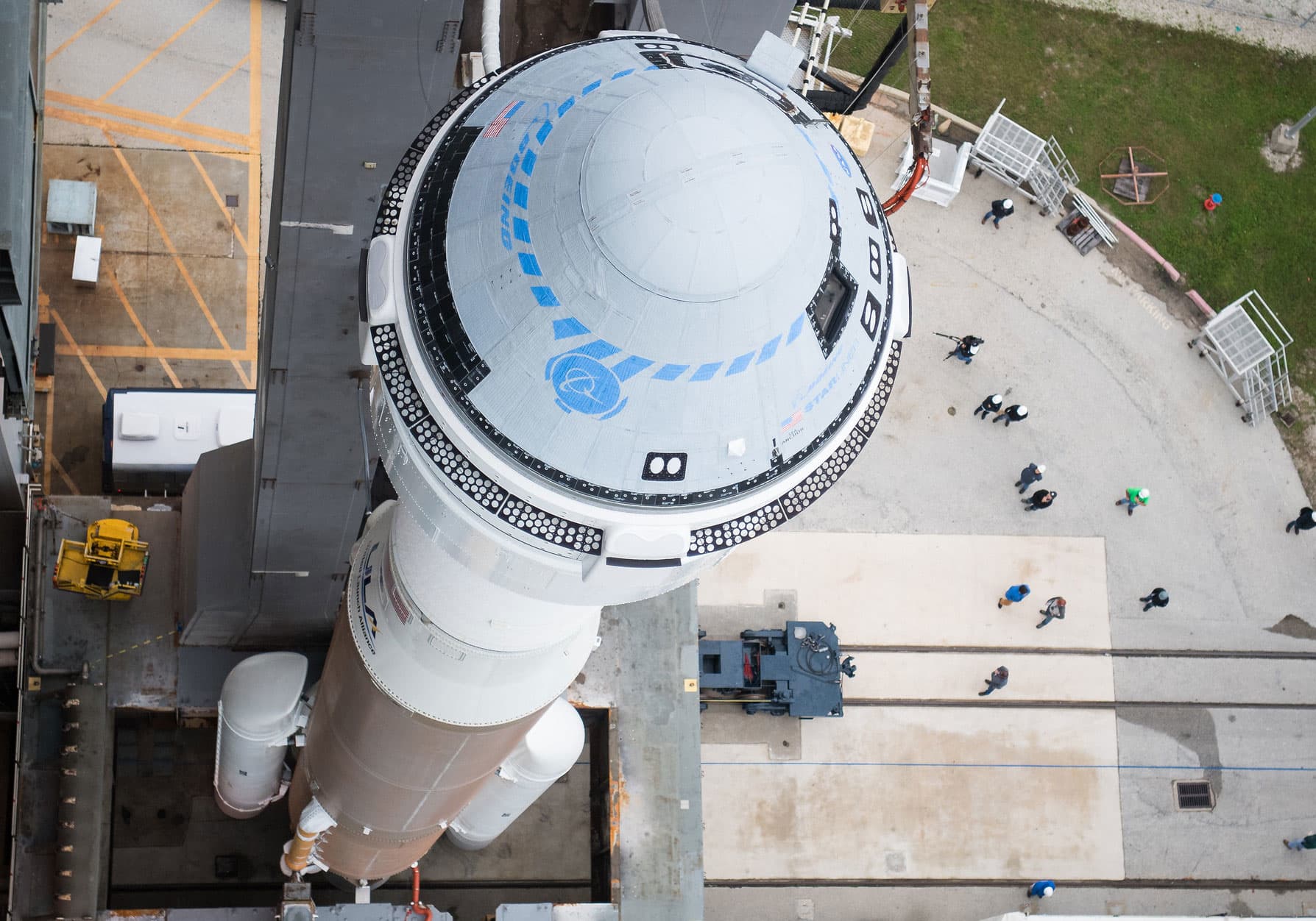
A United Launch Alliance Atlas V rocket with Boeing’s Starliner spacecraft onboard is seen as it is rolled out.
NASA | Joel Kowsky
Now more than three years behind schedule, Boeing’s Starliner spacecraft is under heavy scrutiny from a National Aeronautics and Space Administration investigation.
NASA is taking a closer look at problems found during the capsule’s December test flight. NASA Administrator Jim Bridenstine, speaking at the beginning of a call with reporters on Friday, acknowledged that Boeing’s “Orbital Flight Test” (OFT) two months ago has had a growing list of issues found by investigators.
“It’s true that we do think that the OFT flight had a lot of anomalies,” Bridenstine said. “Clearly we are going to learn more in the weeks ahead. We’ll have a lot more information to share at the end of the month.”
The aerospace giant planned to fly NASA astronauts on Starliner this year. In December, Boeing conducted what was supposed to be one of the spacecraft’s last tests before the agency certified it to fly people. The goal of that mission was to fly Starliner without crew to the International Space Station, deliver cargo, and return safely – to demonstrate its capabilities and safety. But the spacecraft did not dock with the space station after a software issue during the launch caused Starliner’s autonomous flight-control system to misfire, putting Starliner in the wrong orbit.
Additionally, NASA confirmed on Friday that Boeing’s Starliner suffered not one but two major software defects during that test flight. The latter software problem could have caused “catastrophic spacecraft failure,” a panel of NASA safety experts said on Thursday, if Boeing had not caught the issue during the mission. The second software issue was a piece of code that could have caused two pieces of Starliner – its “crew module” and “service module” – to collide in orbit before the spacecraft reentered the atmosphere.
“We found the second software issue because we went looking,” Boeing senior vice president Jim Chilton said.
In all, NASA says its investigation of the mission has found “11 top-priority corrective actions” for Boeing. Additionally, the agency expects more will be identified when the investigation is complete.
The software problems of Starliner comes as Boeing grapples with the fallout from two fatal crashes of its 737 Max commercial jetliner, arguably the largest scandal in the company’s history. Those two crashes — which killed 346 people — have embroiled Boeing in a wide review of its engineering practices, with software flaws at the heart of regulatory reviews. Chilton addressed Starliner’s programming issues broadly at the beginning of his remarks Friday, acknowledging the worse-than-expected performance.
“What we wish we’d done better was software, so there’s a lot of learning there,” Chilton said on Friday.
Both the agency and Boeing addressed the first software issue shortly after the launch. But neither organization disclosed the second defect until more than a month later. NASA’s Doug Loverro said the reason it wasn’t disclosed was because “we didn’t end up having an anomaly.”
“We found an issue and then we fixed it,” Loverro said. “It would have been very difficult … to go ahead and even have the discussion we’re having today without having the independent review team go back and look at this.”
Boeing schedule on hold until investigation completes
Bridenstine said “it is still too early to know” whether or not NASA will require Boeing to redo Starliner’s uncrewed flight test.
“That’s a decision that will be made in the future,” Bridenstine said. “I just don’t think we have enough information at this point.”
Chilton also explained that Boeing’s timeline is on hold until the investigation is finished. Only after Boeing processes those results will the company submit a new schedule for NASA’s approval, Chilton said.
Boeing already has funds set aside if NASA does require another test flight. The company revealed during its fourth-quarter results on Jan. 29 that it took a $410 million charge, in case another uncrewed flight is determined necessary.
Bridenstine still expressed optimism that NASA’s Commercial Crew program will achieve its goal of flying astronauts to space this year. Although SpaceX is also years behind in developing its Crew Dragon capsule, the company’s recent successful tests puts it on track to launch NASA astronauts for the first time in the next few months.


